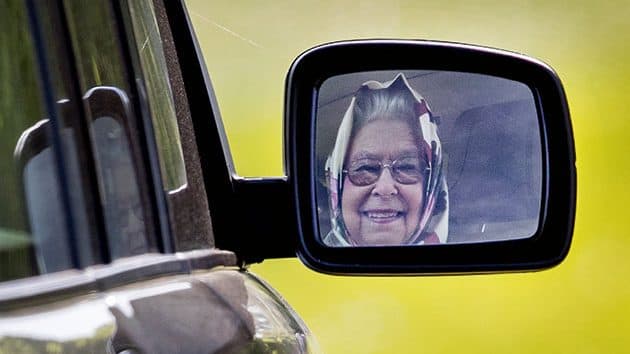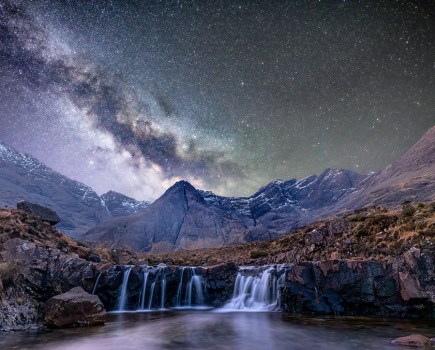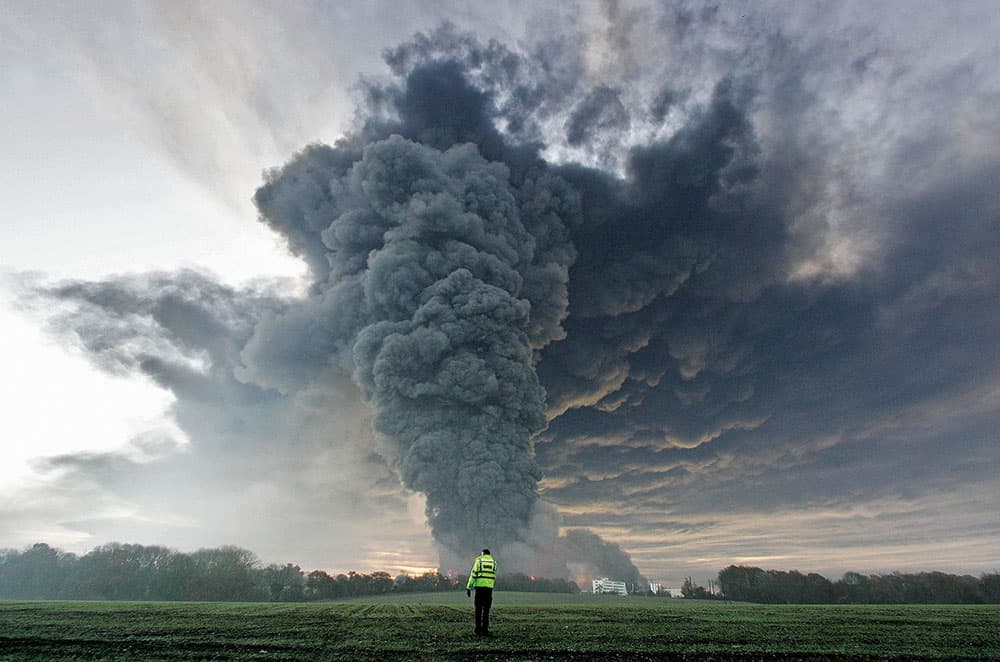
Smoke rises from a fire at the Buncefield fuel depot in Hemel Hempstead in 2005. Credit: Peter Macdiarmid/Getty Images
Peter Macdiarmid lays the starting point of his path to photography at the door of his Guatemala-born mother, who had an unconventional upbringing. ‘She brought that to the family,’ he explains. ‘We would go and do things that were exciting, that other people wouldn’t do. Nowadays, it would be quite normal to go and look for the Royals, but in the ‘70s, when I was growing up, we would go and find where Prince Charles was playing polo. In some ways it’s remarkable that I haven’t become a Royal photographer. I think my mother’s craving for excitement was sort of in-built and that drove me towards news photography.’
He recalls spending 10p on a Box Brownie camera at a jumble sale aged 10. ‘It took some paper-wrapped Kodak film that made quite big negatives. I remember taking a film to Boots and getting prints done’. His father was a keen amateur photographer who ‘had always shot decent Kodachromes’, and he bought Macdiarmid a ZEISS Ikon 35mm camera when he was 12. After that he took photographs for the school magazine and studied photography at college.
Continues below…
[collection name=”small”]
By coincidence his mother got a job as a secretary on the picture desk at The Times and was able to ask her colleagues about where her son should be going and what doors he should be knocking on. Macdiarmid recalls, ‘I had a chat with the picture editor who was quite friendly and positive about my pretty dire portfolio of the time.’
By 1987 Macdiarmid was working for a photo agency called London News Service, which took on people of ‘limited experience’. He reveals, ‘It was sink or swim and you were working with other national photographers, so that was a very steep learning curve. Towards the end of my period there I was being farmed out to The Independent who would ask me to go and do things.’
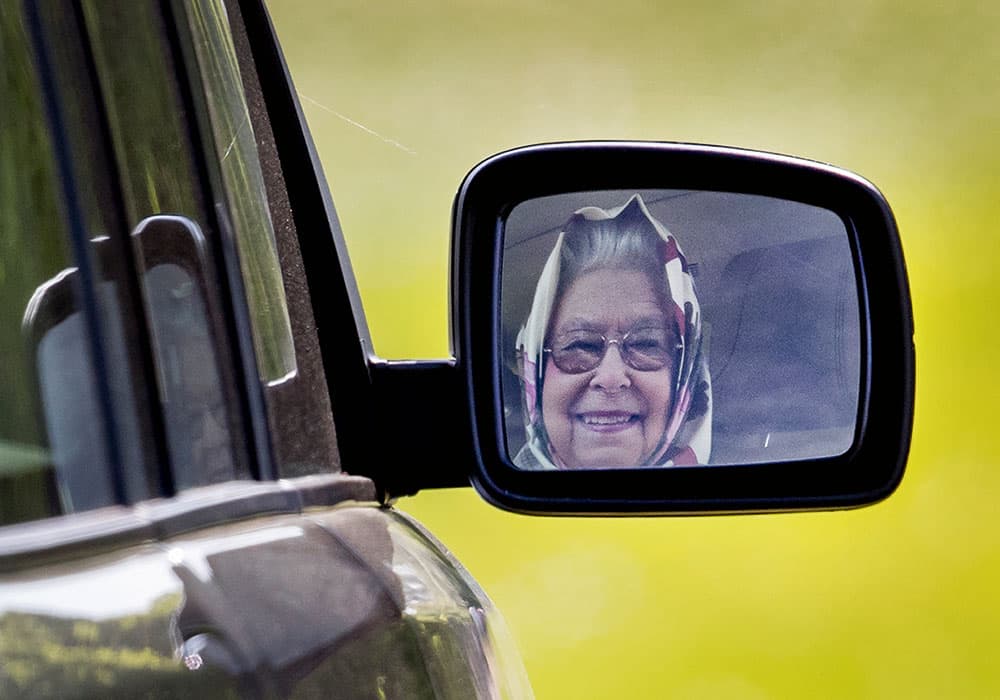
Queen Elizabeth II reflected in her car mirror at the Royal Windsor Horse Show, 2017. Credit: Peter Macdiarmid
After about 18 months with the agency Macdiarmid went freelance and started working for The Sun and The Independent at the same time, which he describes as ‘a bit chalk and cheese’. He adds, ‘With The Independent in those days you could be fairly creative and that was nice. From 1989 onwards I worked solely as a freelancer for them.’
At the start of his career Macdiarmid was shooting with Canon T90 cameras and manual focus lenses. He stuck with those until entering the Canon EOS system with the original EOS-1 SLR, before becoming one of the early adopters of digital in 1996.
Macdiarmid recalls, ‘In terms of equipment I’ve always been willing to try things. At that stage I had a Land Rover with a wet process in the back for colour. Around 1994/5, as laptops and film scanners came in, but digital cameras hadn’t really arrived, I was flying around London and hand-processing colour film when I had to or using a one-hour lab and then scanning in the back of a Land Rover to allow me to shift images for The Independent. So it was a natural progression to go digital from trying to process films and scan images into laptops.’
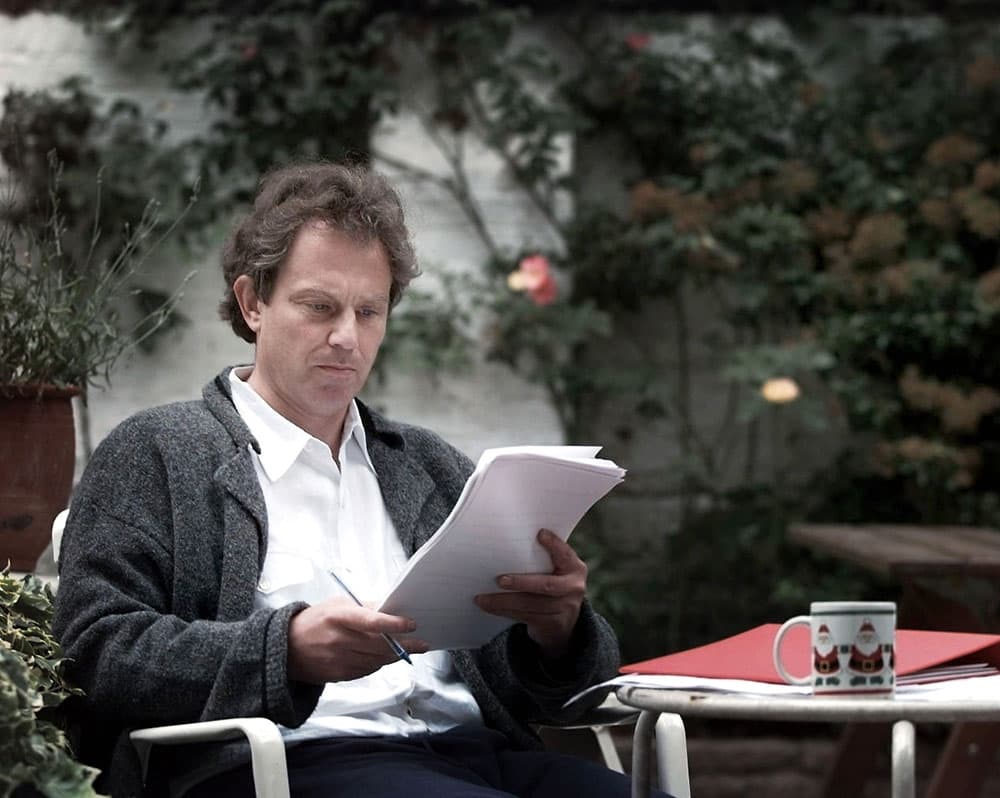
Labour Party leader Tony Blair writes a speech in the garden of his Islington house in London, 1996. Credit: Peter Macdiarmid
His first digital setup cost around £18,000 and included a Kodak/Canon DSC3c digital SLR, which Macdiarmid describes as, ‘a brick’. He adds, ‘It had a 1-megapixel sensor, was connected by a scuzzy SCSI interface, there was no screen on the back, it used £300 big-style PCMCIA cards and was terrible with highlights… but you learnt to become an expert in shooting like you were using transparency film.’
One of the first digital pictures Macdiarmid had published was a shot of then-Labour leader Tony Blair in the garden of his house in Islington. He reveals, ‘It had been setup such that he was writing the famous ‘Road to the Manifesto’ speech. I shot it slightly inside the house looking out just to get the length on the lens. He asked not to be photographed below the waist because he was wearing his jogging trousers as he was going to play football with his boys.’
These days Macdiarmid’s kitbag includes two Canon EOS-1D X Mark II DSLRs, an EOS 5D Mark IV, WTF transmitters and a range of EF lenses, from a 16-35mm up to a 500mm. He also occasionally uses a Sony Cyber-shot RX10 III bridge camera, which he says, ‘is not perfect by any means but it’s a very good camera to have as a piece of light, long glass for when lighting conditions allow.’
Memorable news pictures
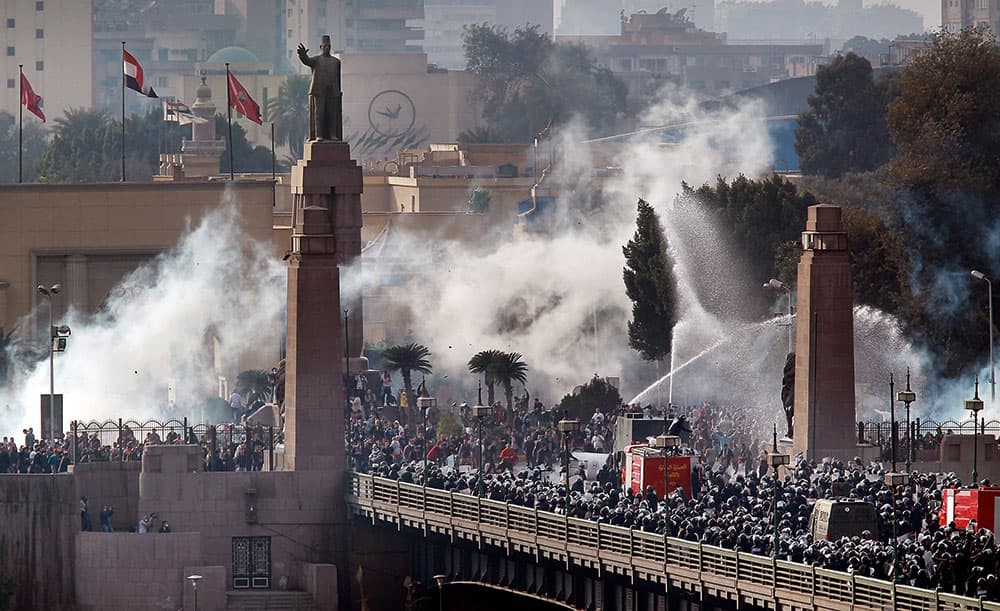
Riot police force protestors back across Kasr Al Nil Bridge as they attempt to get into Tahrir Square on 28 January 2011, in downtown Cairo, Egypt. Hundreds of arrests were made in an attempt to quell anti- government demonstrations. Credit: Peter Macdiarmid/Getty Images
After an 11-year stint at The Independent Macdiarmid worked at Reuters and, in 2005, joined Getty Images as a senior news photographer. His time at Getty saw him co-nominated for a Pulitzer as part of the Getty team that shot the Arab Spring story in Tahrir Square, Cairo, Egypt, in 2011.
Having covered many of the key events of the past 30 years, what does Macdiarmid advise on how to make a great news picture? ‘The key to it is to find something that no one else has seen. You’re basically looking for something different that catches the eye. I always liked looking for humour in things, obviously certain subjects lend themselves to that, visual puns and things.’
He regards his ‘luckiest’ image to be the one of former England football manager Sam Allardyce. ‘I shot it in September 2016 of Allardyce leaving, and he was hiding in the back of a car. As he drove out a golf buggy was driven in front of him to try and put us off the scent. On a long lens I shot a picture through the windscreen showing him sitting in the back of the car using his phone – it was sharp, shot on a camera that allowed me to crop massively and appeared on every [newspaper] front page except The Daily Telegraph, who had it inside, and it was on three or four back pages as well.’
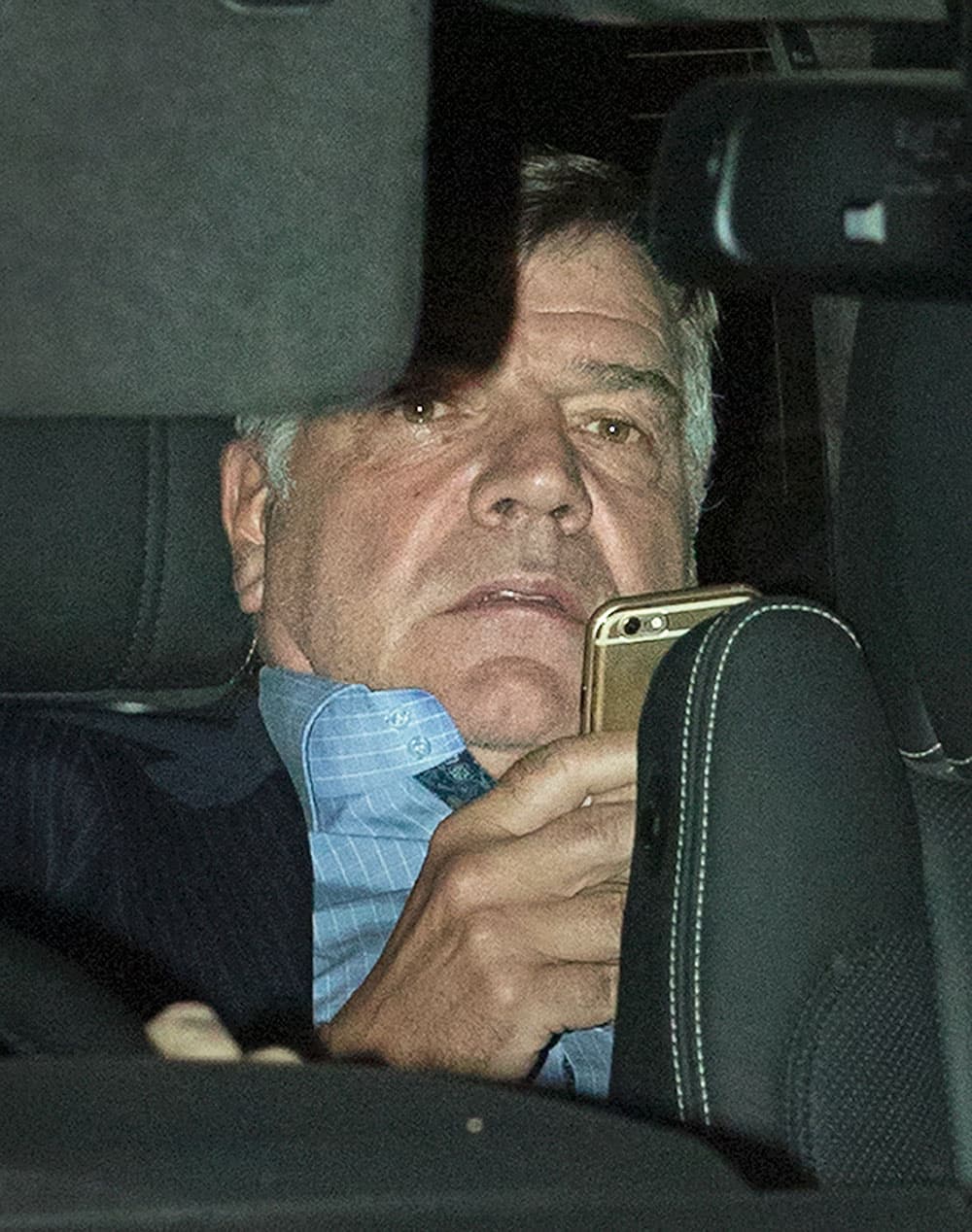
Sam Allardyce in the back of a car leaving Wembley Stadium after being sacked as England football manager. Credit: Peter Macdiarmid
After leaving Getty in 2015, Macdiarmid went to work with his colleague Ben Cawthra, who had set up the London News Pictures agency. He explains, ‘We have a similar interest in what we cover in that it is news-based; [it’s] a lot of politics in and around London and the South East and it’s a mix of print and online that we get published in. For online you need to be quick so we shoot raw, then process and crop in-camera. We transmit to a server that attaches a caption that we’ve pre-written and can change on the phone.’
He admits, ‘It’s competitive and we have to think smarter and work harder than the wire services to which all the big clients subscribe; so we have to beat them. It goes out on FTP to all the newspapers you can think of and all of the online places. We get lots of requests from television and other people as well, but we send live out to all of the newspapers. We have lots of contributing photographers as well, whose material we distribute, so it’s hard work.’
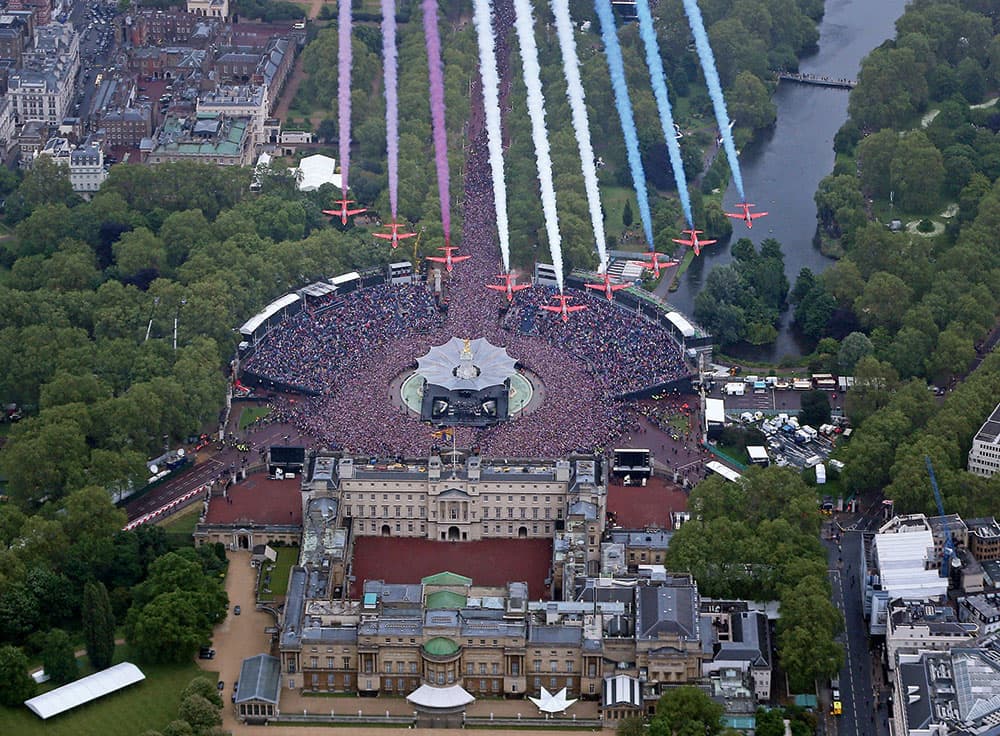
The Royal Air Force Aerobatic Team (RAF) fly in formation over Buckingham Palace to celebrate the Diamond Jubilee of Queen Elizabeth II. Credit: Peter Macdiarmid/Getty Images
Evolution of the industry
With a full three decades under his belt shooting news images I wonder what are the differences between working in 1987 compared to 2017? Macdiarmid replies, ‘I think it’s just the speed of everything and communication that has changed. As an early adopter of digital technology the excitement of being able to transmit a photograph over a mobile phone signal was palpable. Obviously digital is now king and the quality is better than film. The ability to shoot things [that are] three-quarters of a mile away and be able to pull up an image that’s still usable, although fairly pixelated and grainy at that distance, is great. The ability to be able to shoot long, fast and [with] autofocus in the dark is extraordinary.’
He adds, ‘There are so many more outlets for your images now with the growth of online. But the quality of photography, the quality of the understanding and the nous of the photographer is still king. The fact that a member of the public can take a photo with a phone and transmit it… [means] it’s not a specialist thing any more. But being in the right place at the right time is still a skill I think.’
Macdiarmid concludes, ‘I’ve always seen myself as a jobbing photographer. I am the guy who stands outside the door and waits for a day to take a picture. The ability to keep enjoying it and making a living is what keeps me going. The thrill of getting a publication and getting stuff published where all of your competitors are there as well doesn’t leave you.’
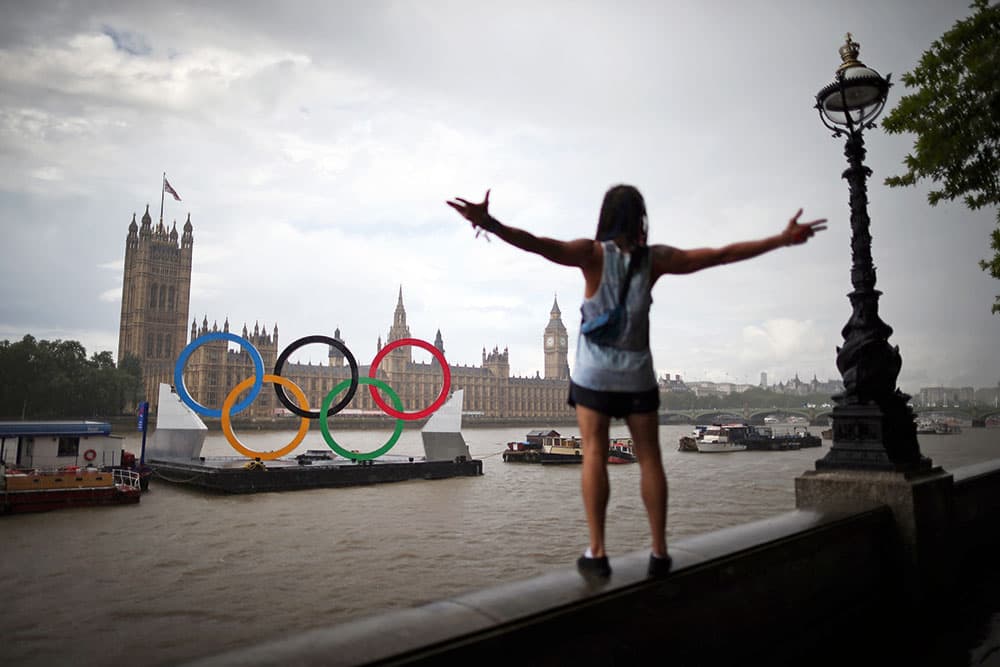
Giant Olympic rings float on a barge opposite Parliament in 2012. Credit: Peter Macdiarmid/Getty Images
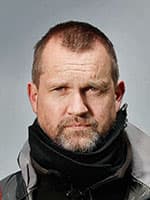 Peter Macdiarmid is a news, corporate and commercial photographer. He began his career in 1987 working for local newspapers in south London, and now works for the London News Pictures agency. Macdiarmid won News Folio of the Year in the Press Photographer’s Year 2009 awards. Visit www.petermacdiarmid.com or www.londonnewspictures.co.uk.
Peter Macdiarmid is a news, corporate and commercial photographer. He began his career in 1987 working for local newspapers in south London, and now works for the London News Pictures agency. Macdiarmid won News Folio of the Year in the Press Photographer’s Year 2009 awards. Visit www.petermacdiarmid.com or www.londonnewspictures.co.uk.

